Alise, Brianna, and Victoria
Hello! We’re officially halfway through the trip!
Today was our first full day in Kakamega, in the beautiful rainforest (and yes, it rains everyday – usually in the afternoon after some morning hours of sun).
But first, we had quite the time falling asleep to the sound of dogs… or so we thought… John the driver informed us that they were in fact olive baboons that live in the forest around our camp.
We started the day off at 6:45 AM greeted by sunshine and colobus monkeys, ready for our bird walk with our guide Job. Job is very skilled at leading bird walks, with tools such as laser pointers to indicate the location of birds, and bird playback tools including an app, and his own whistling skills. He almost immediately located a tambourine dove high in the tree which he recognized via its song. He also heard the call of a brown-throated wattle-eye; unfortunately it never became appeared, but Job and the bird called back and forth to each other a few times. The scenery was absolutely gorgeous and we saw many incredible birds along our walk including the turacos, purple-throated cuckoo-shrike, African thrush, and tinker birds. We even saw a brown-capped weaver building its nest! Although the walk was intended for seeing birds, we also happened to come across a red-tailed monkey (one of 5 or 6 primate species that can be seen in the forest) and many species of butterflies, including the imperial butterfly and green-banded swallowtail butterfly. The forest path was littered with guava fruit – the monkeys had obviously been snacking! It was great to have someone guiding us, sharing details about the specific species in the forest.
After breakfast we listened to four more paper review presentations from Adam, Isabella, Katie, and Renee wherein we focused on political and managerial perspectives of conservation and their associated implications on biodiversity and conservation, specifically in regards to the lands of Indigenous peoples.
It was a big laundry day today. We learned how to dry our clothes optimally by laying them onto bushes in direct sunlight – this is what the locals do. But we had to make sure they were taken inside before the daily afternoon rain.
After lunch, we had the chance to ID the many species of butterflies that are attracted to the guava around the area. The most common was the blue mother-of-pearl which was beautifully purple-blue on the inside of its wings and brown on the outside to allow it to camouflage, looking like a dead leaf.
Next, Dr. Lousheed came running down from posting the blog with lots of excitement for us to find out that he had a snake in this jacket pocket, a stunning black Lineated blind snake he had captured by the stream. This species is seldom seen as it lives a rather solitary life underground or beneath cover.
Later in the afternoon, we returned to the rainforest to further explore. This time we saw olive baboons, learned about host-parasite relationships in tree species leading to some interesting architecture (e.g. hemi-parasitic figs growing over their ‘host’ tree). Job informed us that the seeds of the tree are viable once they have passed through a bird’s digestive tract, and are left as feces on a host tree. He gave us more interesting information such as the fact that the Dracaena fragrans is a culturally important shrub and that when a young man inherits the land, this particular plant is used to mark boundaries of inherited land. He also mentioned that many trees – such as the Ficus lutea, and Ficus bobo have buttress roots that are a important characteristic for supporting very tall trees in the shallow tropical soils. Many of the trees were around 300-500 years old. It takes many years to achieve this circumference due to competition for light. As we neared the end of the walk, we heard the call of a red-chested cuckoo, also known as the rain bird which told us it was about to rain, and sure enough it did!
While the rain was pouring, we took cover under the canopy and had a very interesting lecture by Dr. Lousheed about environmental DNA and its current and seemingly ‘futuristic’ capabilities in collecting more data about species, their food web, their interactions, and their range!
To end of the eventful day we’ve had, we had a night walk through the forest where we did playback for African wood owls. One did respond; however it was too far away for us to see it. We were hoping to see some frogs and snakes but did not have any luck. Hopefully we have better luck
tomorrow!
Tutaonana baadave (See you later)!

blue mother-of-pearl
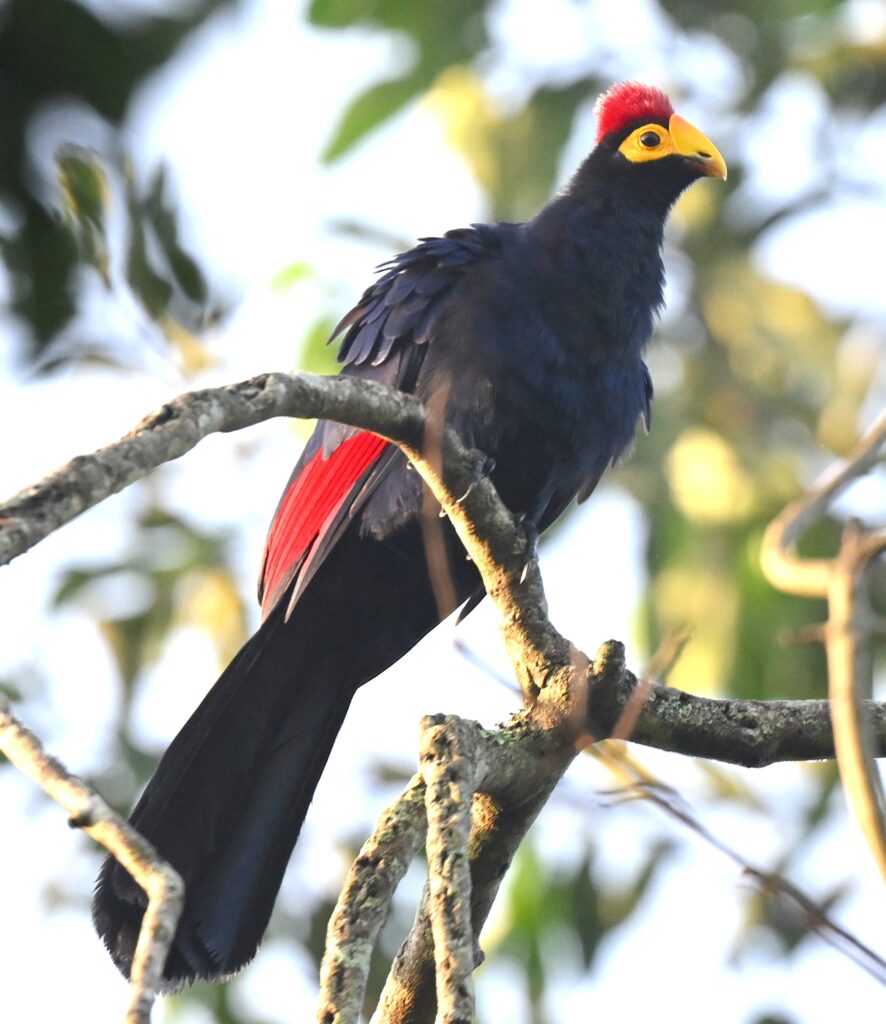
Ross’s turaco
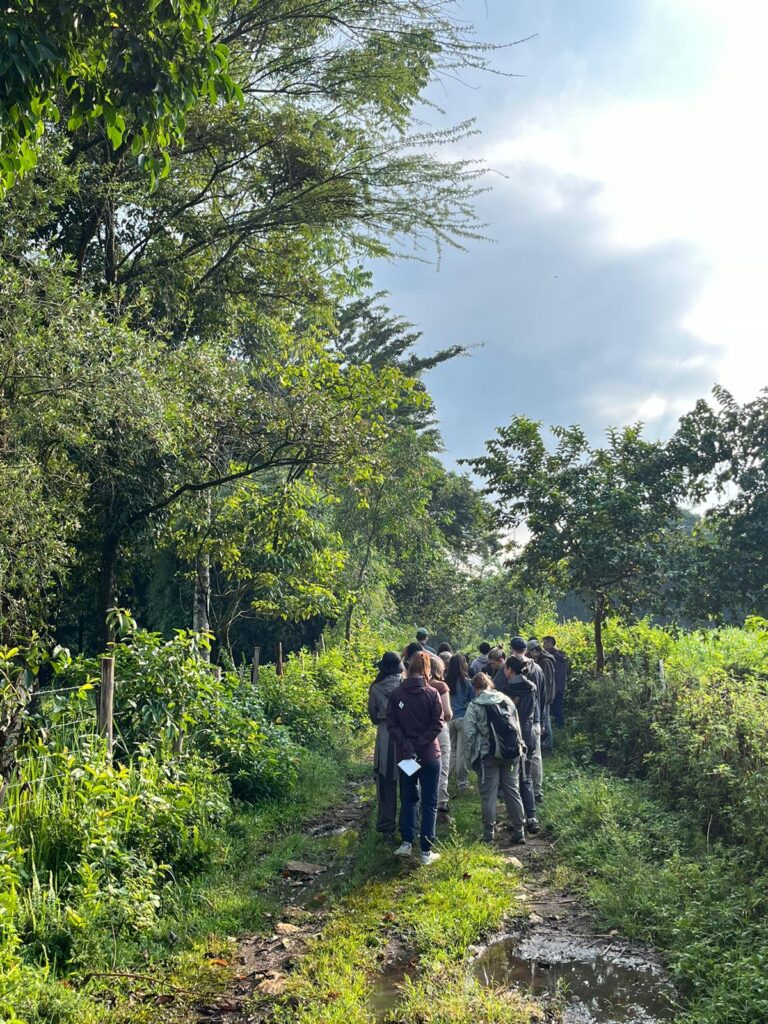
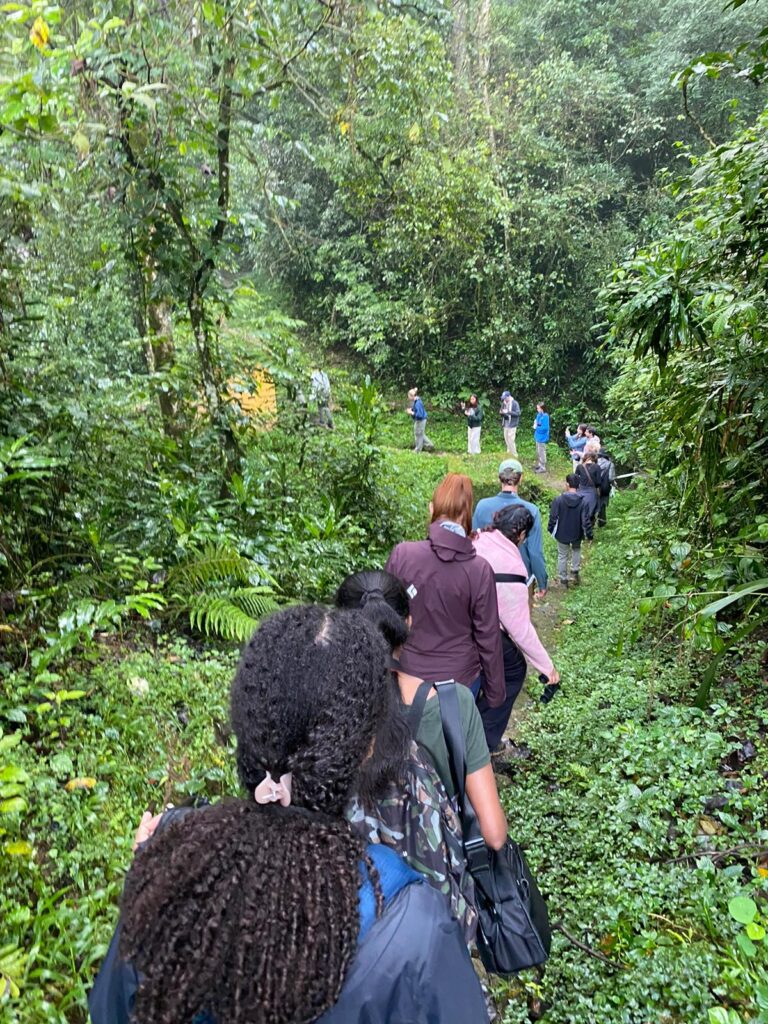
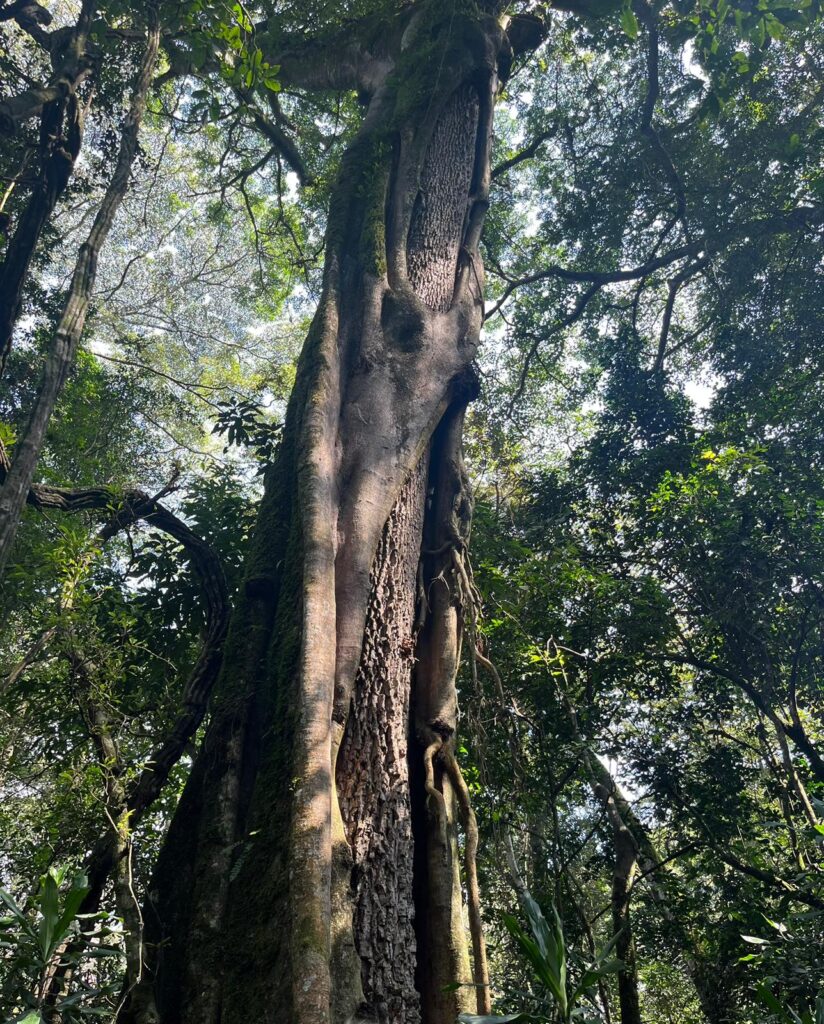
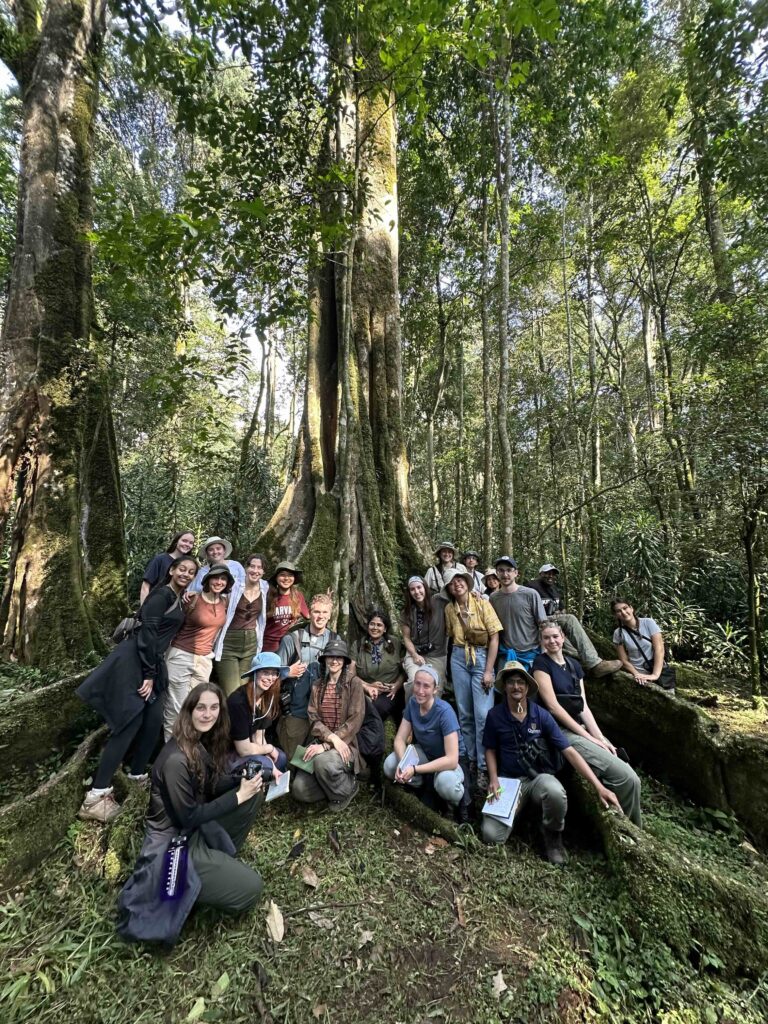
Class in front of large buttress roots
Leave a Reply